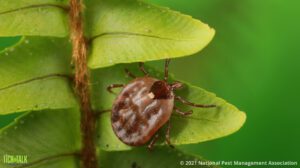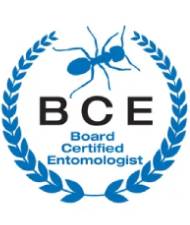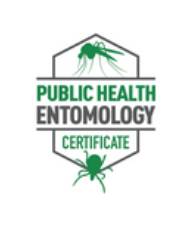Why Understanding The Perils of Tick Bites for Humans and Pets is Important

Americans Are Aware That Ticks Can Spread Different Diseases To Humans.
While 46% of Americans are knowledgeable about the potential dangers of tick bites. Recognizing the specific diseases they can transmit is important. A large segment of the population remains unaware of this serious health threat—information provided by NPMA.
The Perils of Tick Bites
Tick bites, while often seemingly innocuous, pose a significant health risk. These tiny arachnids are capable of transmitting a variety of debilitating diseases to humans. As the climate changes and tick populations expand, the threat of tick-borne illnesses has grown considerably.
One of the most well-known tick-borne diseases is Lyme disease. Caused by the bacteria Borrelia burgdorferi. It can lead to many symptoms, including fever, fatigue, headache, and a characteristic skin rash. Lyme disease can spread to the joints, heart, and nervous system if left untreated. Other dangerous diseases transmitted by ticks include Rocky Mountain spotted fever, anaplasmosis, babesiosis, and ehrlichiosis. Each of these illnesses has the potential to cause severe illness and even death if not diagnosed and treated promptly.
To protect yourself from tick-borne illnesses, it’s essential to take precautions when spending time outdoors. This includes wearing long sleeves and pants, using insect repellent, and performing regular tick checks. Removing a tick promptly and correctly is also crucial. If you develop symptoms such as fever, rash, or fatigue after a tick bite, it’s important to seek medical attention immediately.
18% of Americans Know Someone Who Has Contracted a Tick-Borne Disease
The Ripple Effect of Tick-Borne Illness
A startling statistic reveals that nearly one in six Americans has a personal connection to the growing threat of tick-borne diseases. This means millions of individuals know firsthand the challenges and hardships faced by loved ones who have contracted these illnesses through a tick bite.
These experiences are often marked by a complex interplay of physical, emotional, and financial burdens. Patients may describe enduring chronic fatigue, debilitating joint pain, cognitive difficulties, and other persistent symptoms that significantly impact their quality of life. The diagnostic odyssey can be particularly harrowing. Many tick-borne illnesses are often misdiagnosed or overlooked, leading to delayed treatments and worsened outcomes. Moreover, the long-term consequences of these infections can be far-reaching. This affects not only the patient but also their families and caregivers. The emotional toll of living with a chronic, often invisible illness cannot be overstated, and the financial strain of medical expenses, lost wages, and caregiving costs can be overwhelming.
These personal narratives underscore the need for increased awareness, prevention efforts, and improved diagnostic and treatment options for tick-borne diseases.
Concerns About Tick Bites
A quarter of the U.S. population expresses significant concern over the threat posed by tick bites and the associated risk of contracting tick-borne diseases. This widespread apprehension highlights a growing public awareness of the dangers these tiny arachnids can present. Factors contributing to this heightened anxiety include the increasing prevalence of tick-borne illnesses, the severity of symptoms often experienced by those infected, and the challenges associated with diagnosis and treatment. As a result, many Americans are taking proactive measures to protect themselves and their families from tick exposure.
1 in 5 (19%) Americans Say Their Pet Have Had an Encounter with Ticks
A significant portion of the American pet-owning population, nearly one in five, has firsthand experience with the threat ticks pose to their beloved animals. Dogs, in particular, due to their outdoor activities, are at a heightened risk of encountering these parasitic arachnids. Tick bites on pets can not only cause discomfort and irritation but also transmit a range of serious diseases, such as Lyme disease, ehrlichiosis, and anaplasmosis. These illnesses can lead to severe health complications for animals if left untreated.
Owners can implement several preventive measures to safeguard pets from the dangers of ticks. Regular tick checks after outdoor excursions are essential to promptly remove any attached ticks. Using veterinarian-approved tick repellents, such as topical or collar treatments, can provide effective protection. Additionally, keeping long-haired pets’ coats trimmed and avoiding tall grass and wooded areas can reduce the likelihood of tick encounters. Consulting with a veterinarian about appropriate tick prevention strategies for individual pets is crucial, especially for those living in regions with high tick populations.
Preventing Tick Bites and Tick-Borne Diseases
Protecting yourself from tick bites requires a combination of preventative measures. When venturing outdoors, especially in wooded or grassy areas, wear long-sleeved shirts, long pants, and closed-toe shoes. Applying insect repellent containing DEET, picaridin, or other effective ingredients to exposed skin and clothing can also be highly beneficial. Additionally, treating clothing and gear with permethrin-based products provides an extra layer of protection. It’s crucial to perform thorough tick checks upon returning indoors, examining your body, clothing, and pets for any attached ticks. Showering promptly after being outdoors can help remove unattached ticks.
Creating a tick-free zone around your home can also reduce the risk of encountering these pests. Regularly mowing the lawn, removing leaf litter, and creating a barrier between wooded areas and your property can help deter ticks. If you discover a tick attached to your skin, remove it promptly using fine-tipped tweezers. Saving the removed tick can aid in the identification of symptoms. While these precautions can significantly lower the risk of tick bites, it’s essential to remain vigilant and seek medical attention if any concerning symptoms arise.

Jeffery Preece,BCE,PHE
Jeffery Preece is the Owner and Technical Director at ZipZap Termite & Pest Control



